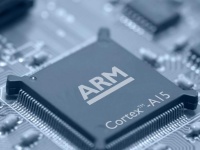AMD takes ARMs against the sea of Intel

In the competitive world of computer chips desperate times can call for desperate measures, especially when every chip vendor has an interest in spreading fear, uncertainty and doubt (FUD) about their rival's gear.

Buy one chip and you risk dooming your organisation through reduced software support (Itanium). Buy another and you'll never get the performance you need (ARM). Purchase something different and perhaps you're dicing with chips whose expense comes from the manufacturer's low yields with a fabrication process that won't knuckle down (AMD).
In the past couple of years this FUD has grown from a breeze into a howling gale as Intel, AMD and ARM try to convince the world that their chips are best. The intensity is growing because the rise of the cloud has fundamentally altered the market for chipsellers, and all these companies can smell money in the datacentre refreshes of cloud operators like Google, Facebook and Microsoft.
Intel, with its record revenues, huge fabrication facilities and cosy partner relationships, has dominated the conversations of the chip industry.
On Monday, AMD got sick of this and announced a significant deal with ARM, which will see it produce chips designed by another chip company to try and disrupt Intel.
One of the main arguments Intel likes to use for why its chips are better than any produced by the competition is that they have a combination of high performance along with energy efficiency thanks to leading process technologies.
All about (low) power
But this argument may not work in the datacentres of the new IT environment. Cloud datacentres typically run applications confortable running on thousands of relatively weak cores, rather than a select few powerful ones. This model favours the low-power reduced instruction set (RISC) chips of ARM over the complex instruction set (CISC) chips of Intel and AMD.
AMD's affirmation of ARM's importance to the server market can be read in two ways — either the company really believes ARM has a chance of gaining a significant amount of market share here, or AMD is grasping at one of the few straws left available to a company shrunk and demoralised by successive cutbacks, market losses and leadership changes.
The truth, I think, is a little bit of both: yes, ARM has a slew of low-power benefits stemming from its RISC architecture that means its chips can have better electricity consumption than Intel. On the other hand, it does not have much of a software ecosystem yet and, though there have been a couple of announcements, we are still a year away from seeing any kind of ARM 64 chip in the market.
Meanwhile Intel is cranking out chips made to its advanced 22nm tri-gate process — something that AMD and ARM's chip fabbers TSMC, GlobalFoundries and Samsung, are yet to bring in — and is preparing to make chips to its even better 14nm process.
Knife fight
Ultimately the argument can be summed up as this: Intel accuses ARM server makers of bringing a knife to a gunfight, while ARM server makers think that's fine because for every single gun they have around four to eight knives.
What's more, as around 50 percent of the total cost of a modern datacentre comes from power consumption, ARM chips' energy-thrifty nature can translate to huge cost savings over the long term.
As long as the software community gets behind porting applications over to ARM, AMD's RISCy gamble could lead the company to record revenues in the cloud, or bring it crashing down to earth. Over the next five years, we should find out which is the case.